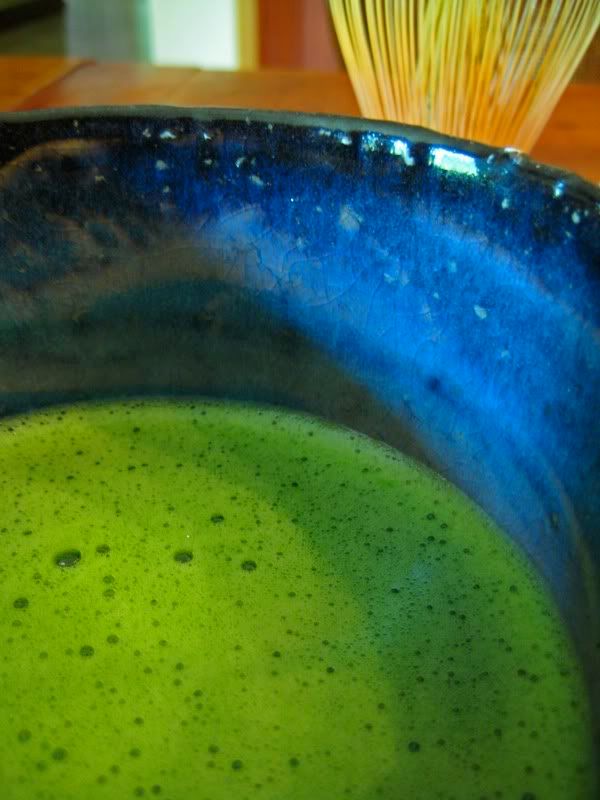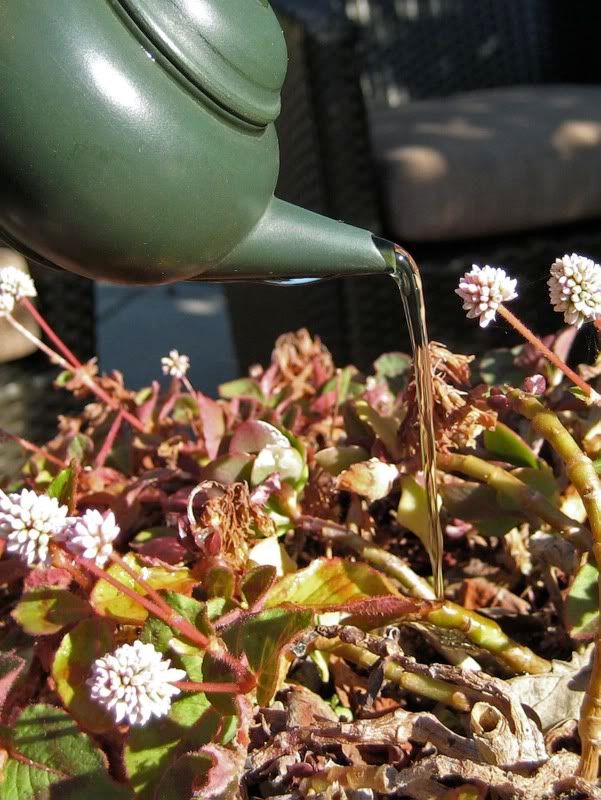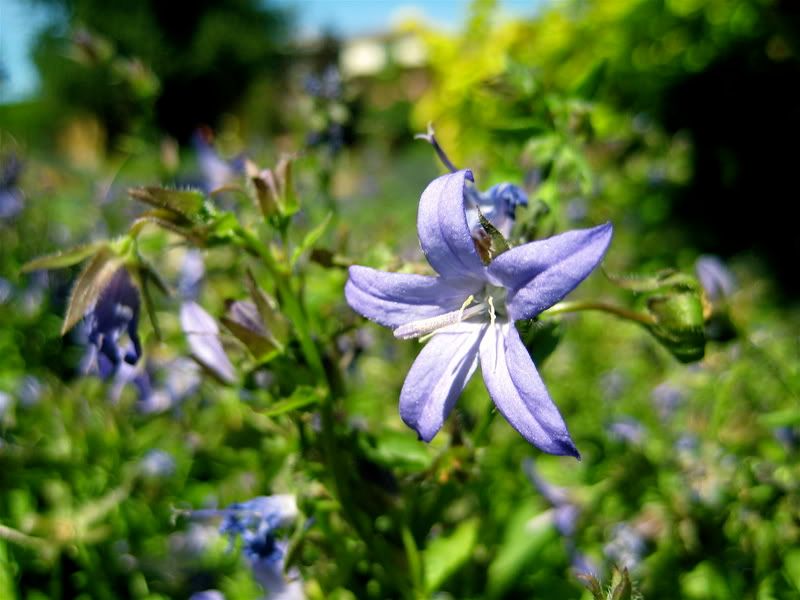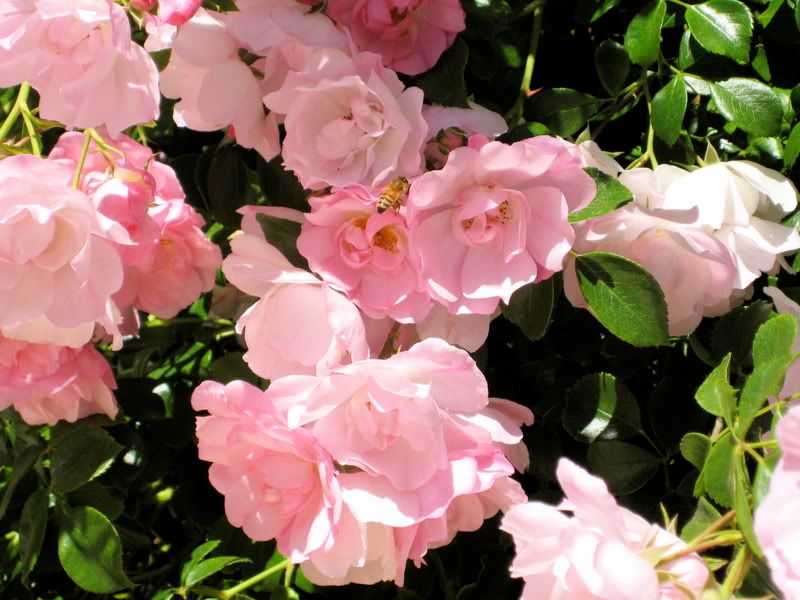Yesterday, I drove up to the Phoebe A. Hearst Museum of Anthropology in Berkeley, CA to attend a presentation titled "
From Garden to Gaiwan: the Journey of Pu'er Tea." The event consisted of an hour long presentation by Brian Kirbis, followed by three hours (!) of pu'erh tasting.
 One of several tea setups at the event.
One of several tea setups at the event.The lecture was excellent; it was informative and academic, yet artful. The majority of the lecture was a discussion of the geopolitical, ecological, and social changes taking place in the wild pu'erh gardens of southwestern Yunnan, due to the growing demand for mao cha (the raw materials needed to make pu'erh). For the most part, Brian documented these changes as they took place in the Bulang village of Laoman'e, a small millennium-old community of wild tea farmers, and compared it to other nearby areas also experiencing the effects of modernization and development.
Near the end of his stay, Brian filmed a short ethnography of the people of Laoman'e, narrated by the charismatic (and quite talkative, according to Brian's account) village leader, Ai Wennan. In this film, one sees villagers hiking through the surrounding forests, picking tea leaves, wilting them, firing them over the same fires used for cooking their meals, and rolling them by hand.
It was a very informative lecture, especially if one already had some experience with puerh. I learned quite a few things about how mao cha farming and processing are carried out; particularly, the distinction between blending at the farm level and at the factory level. Just because one finds leaves of different colors and sizes in an "unblended" puerh does not mean that the factory is necessarily being dishonest. As shown in Brian's presentation, farming communities often blend the pickings from each household into one large pile; as each household typically picks and processes their tea separately, this may result in a blend, of sorts.
 David, Brian, and Jason, examining a mid-1980s tuo cha.
David, Brian, and Jason, examining a mid-1980s tuo cha.After the lecture, we drank tea. :) It was great talking and drinking with several people I've only had contact with online! I sat at Jason's (a.k.a. bearsbearsbears of the
Puerh LJ, TeaChat, and
Bearsblog) table, where I was able to incessantly pick his brain about teas, teawares, water, etc.
 Jason displaying his awesome little business cards at his table.
Jason displaying his awesome little business cards at his table.He brewed 5 teas: a gong ting grade Menghai shu, a 2006 Nannuo shan sheng, a 2002 bamboo-roasted sheng, a mid-1980s sheng tuo cha, and a 1996 7542 sheng. The first four were generously provided by Brian, while the fifth was from Jason's personal stash. The teas were all good; I especially enjoyed the last three. Jason even let me brew a bit at the end of the night while he started to clean up, which must have felt a bit like handing over one's car keys to a student driver.
 Four teas provided by Brian, displayed at his table. Counter-clockwise from the left: 1980s tuo cha (behind wrapper), 2006 Nannuo shan, Menghai shu, 2002 bamboo-roasted sheng.
Four teas provided by Brian, displayed at his table. Counter-clockwise from the left: 1980s tuo cha (behind wrapper), 2006 Nannuo shan, Menghai shu, 2002 bamboo-roasted sheng.It was lots of fun, though the 50 or so cups of puerh through 10 PM sure didn't help me sleep last night. :) I met lots of new people, and learned a ton about tea. I'm very happy I went, and I won't be forgetting it any time soon.
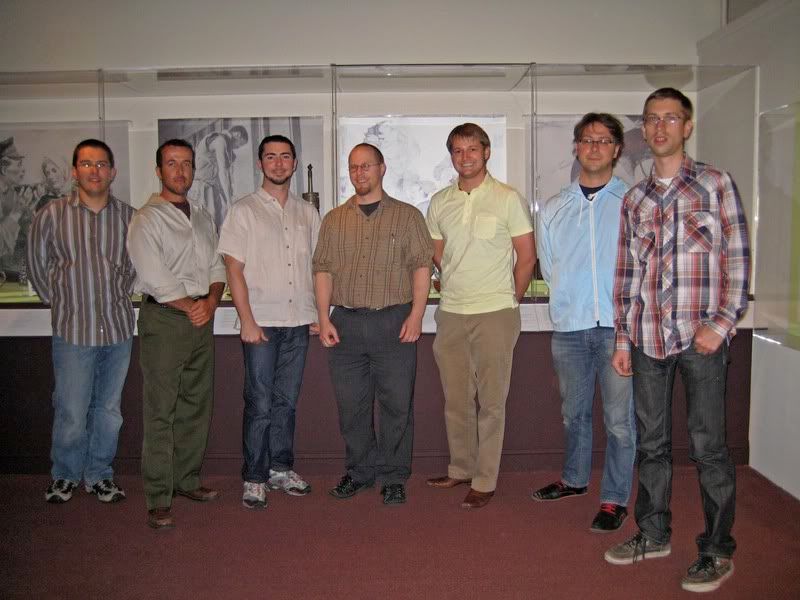 Iffy group picture. From left: Adrian, Brian, Jason, Simran, Me (ugh), David, and Will. Completely obscured by us is a nice exhibit of various teawares.Davelcorp's writeup can be found here. Also, there are more photos in the Puer Flickr pool.
Iffy group picture. From left: Adrian, Brian, Jason, Simran, Me (ugh), David, and Will. Completely obscured by us is a nice exhibit of various teawares.Davelcorp's writeup can be found here. Also, there are more photos in the Puer Flickr pool.
 I recently received an email from Jesse Jacobs of Samovar Tea in San Francisco, who informed me of a new online video series that he has produced. He writes,
I recently received an email from Jesse Jacobs of Samovar Tea in San Francisco, who informed me of a new online video series that he has produced. He writes,


